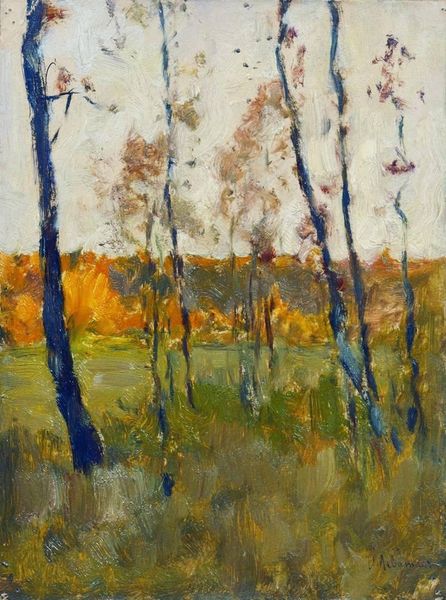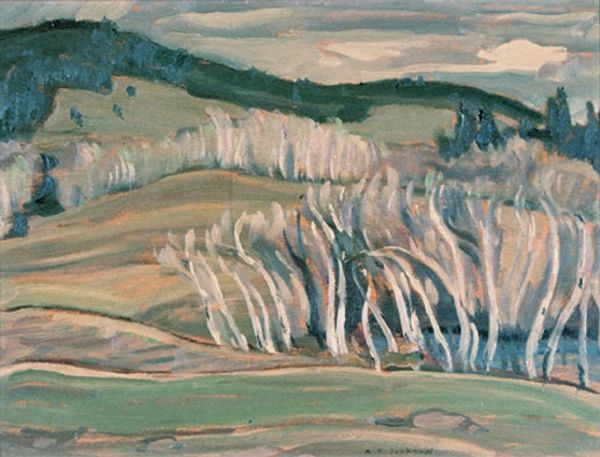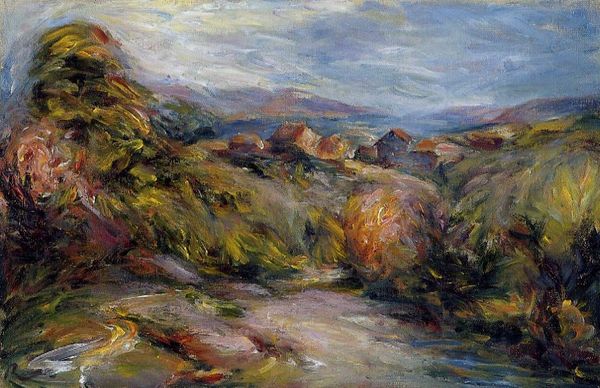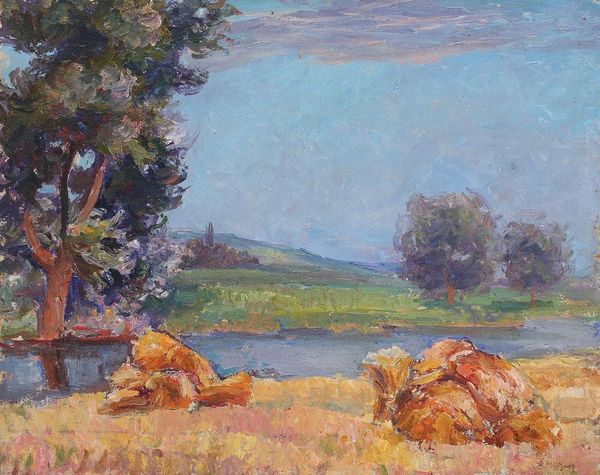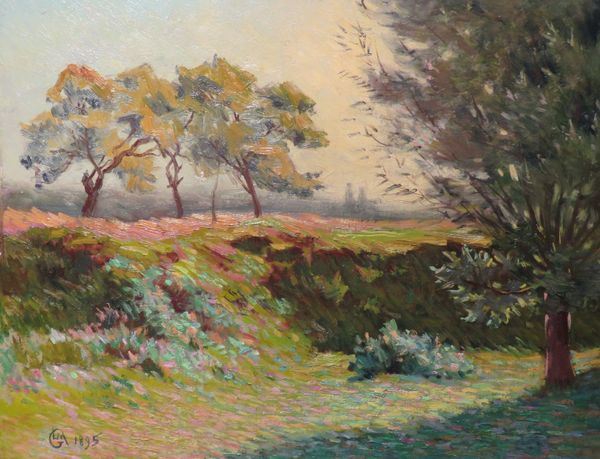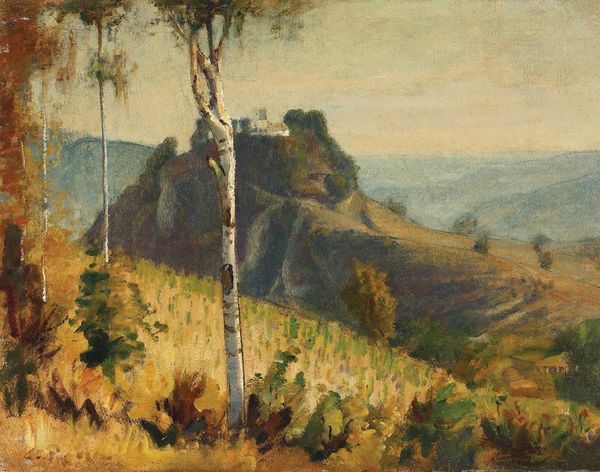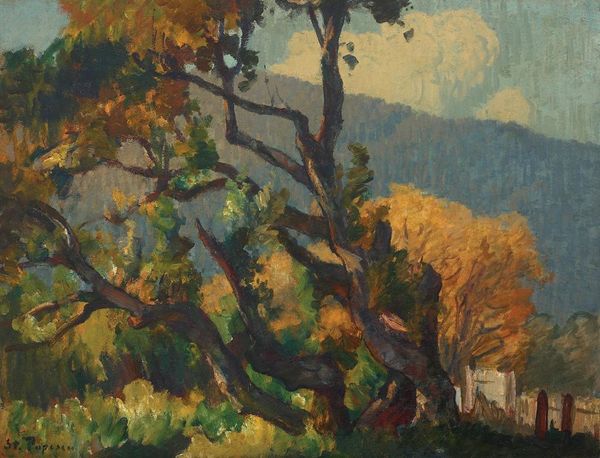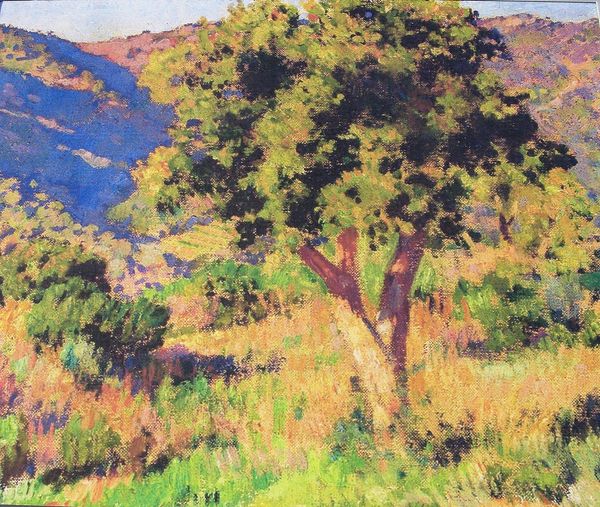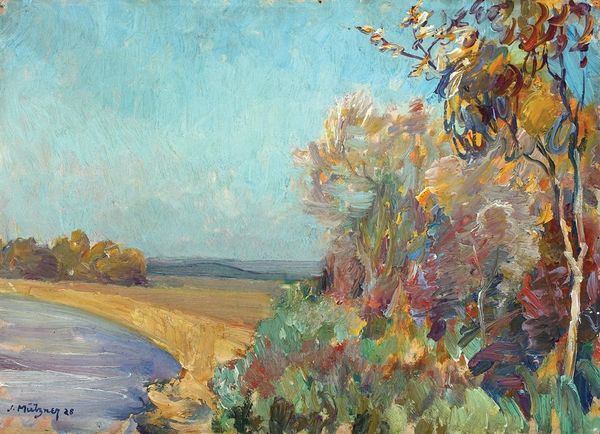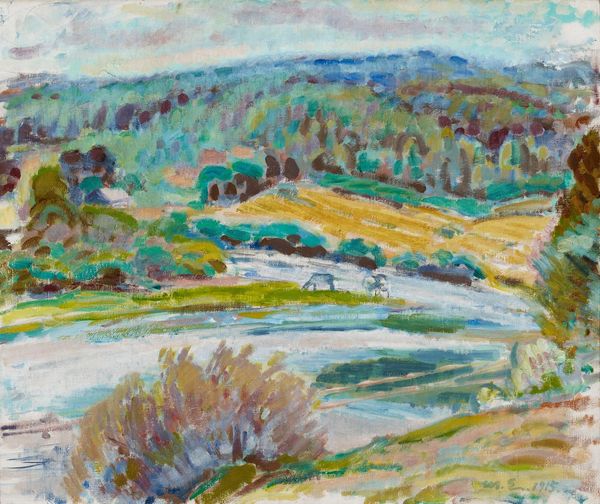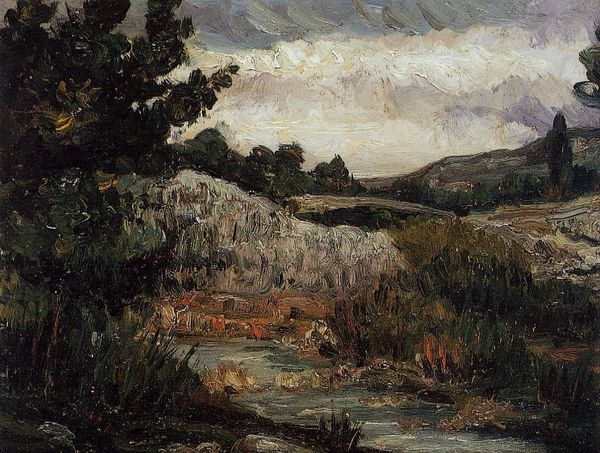
Copyright: Public domain
Editor: This oil painting, titled "Woods," was created by Harry Phelan Gibb in 1930. The brown and ochre tones definitely create a somber mood. It's like looking at nature bracing itself for winter. What stands out to you? Curator: The somber tone you noted is definitely palpable. The symbolism within "Woods" hinges on the concept of transition, doesn't it? Consider the bare tree reaching towards the sky. Trees are perennial symbols of life, strength, and growth, yet here, stripped bare, it evokes a sense of mortality and temporality. What do you make of the landscape receding into the background? Editor: I guess I didn’t really consider how that lone tree represents the passage of time. The way the landscape disappears suggests distance. Is that a journey maybe? Curator: Indeed. Consider the visual rhyme between the lone tree and the aggregated forms of the woods; both aspire vertically. Yet their individual destinies are separate; their symbolism distinct. Is this painting a memento mori? A suggestion of human continuity? A reflection on time's passage? Gibb’s layering encourages us to consider such associations. What has your understanding become? Editor: I see what you mean. It’s a painting layered in visual metaphors. Not just about woods, but maybe about human existence too? Curator: Precisely. And that is the enduring power of visual symbols; how they morph and deepen meaning across generations and individual experiences. A landscape can mirror our internal world.
Comments
No comments
Be the first to comment and join the conversation on the ultimate creative platform.
